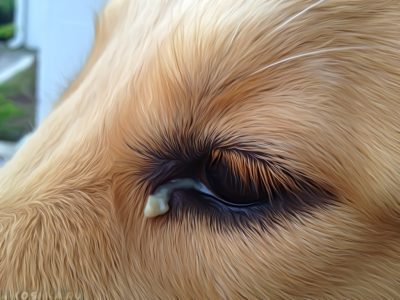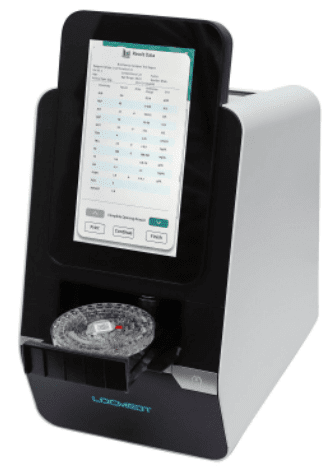
Tès san jeneral ak byochimik nan chen: dechifre endikatè yo
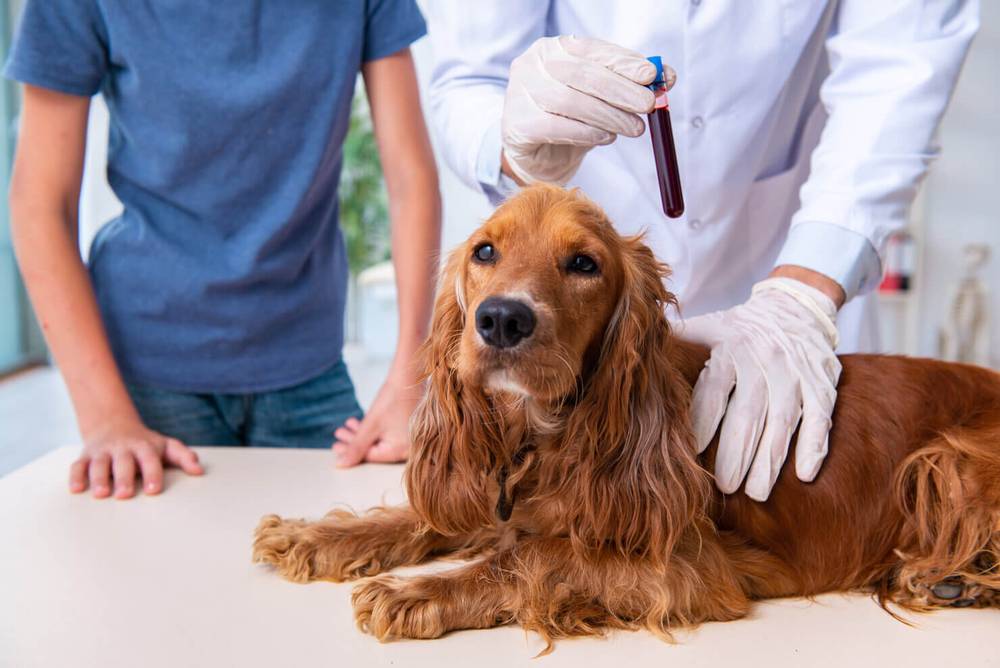
contents
Types of blood tests in dogs
There are many types of tests and blood counts in dogs, we will discuss the most important of them: the general clinical analysis (CCA) and the biochemical blood test (BC). An experienced clinician, by comparing the history and test results, can determine which direction to choose in the diagnosis and how to help the patient.
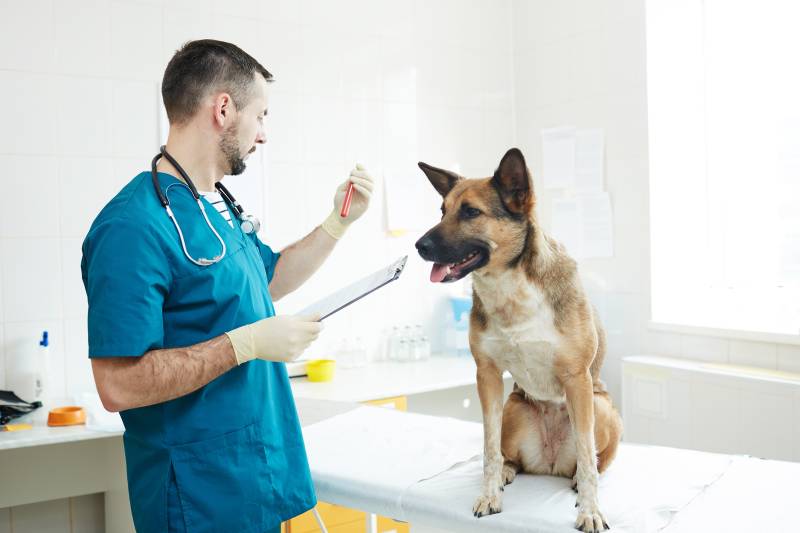
Analiz jeneral
A complete blood count in dogs will show signs of infection, the intensity of the inflammatory process, anemic conditions and other abnormalities.
Faktè prensipal:
Hematocrit (Ht) – the percentage of red blood cells in relation to the volume of blood. The more red blood cells in the blood, the higher this indicator will be. This is the main marker of anemia. An increase in hematocrit usually does not carry much clinical significance, while its decrease is a bad sign.
Hemoglobin (Hb) – a protein complex contained in erythrocytes and binding oxygen. Like hematocrit, it plays a major role in the diagnosis of anemia. Its increase may indicate an oxygen deficiency.
Red blood cells (RBC) – red blood cells are responsible for the transport of oxygen and other substances and are the most numerous group of blood cells. Their number closely correlates with the hemoglobin index and has the same clinical significance.
Leukocytes (WBC) – white blood cells are responsible for immunity, fighting infections. This group includes several types of cells with different functions. The ratio of different forms of leukocytes to each other is called leukogram and is of high clinical importance in dogs.
Neutrophils – are very mobile, able to pass through tissue barriers, leave the bloodstream and have the ability to phagocytosis (absorption) of foreign agents such as viruses, bacteria, protozoa. There are 2 groups of neutrophils. Stab – immature neutrophils, they have just entered the bloodstream. If their number is increased, then the body reacts sharply to the disease, while the predominance of segmented (mature) forms of neutrophils will indicate a chronic course of the disease.
Eosinophils – a small group of large cells, the main purpose of which is the fight against multicellular parasites. Their increase almost always indicates a parasitic invasion. However, their normal level does not mean that the pet does not have parasites.
Basophils – cells responsible for the allergic reaction and its maintenance. In dogs, basophils increase very rarely, unlike people, even if there is an allergy.
Monocytes – large cells that are able to leave the bloodstream and penetrate into any focus of inflammation. They are the main component of pus. Increased with sepsis (bacteria entering the bloodstream).
Lymphocytes – Responsible for specific immunity. Having met with an infection, they “remember” the pathogen and learn to fight it. Their increase will indicate an infectious process, they can also increase with oncology. A decrease will speak about immunosuppression, bone marrow diseases, viruses.
Platelets – non-nuclear cells, the main function of which is to stop bleeding. They will always rise with blood loss, as a compensatory mechanism. They can be reduced for two reasons: either they are excessively lost (thrombotic poisons, blood loss, infections), or they are not formed enough (tumors, bone marrow diseases, etc.). But often they are underestimated erroneously if a blood clot has formed in the test tube (research artifact).
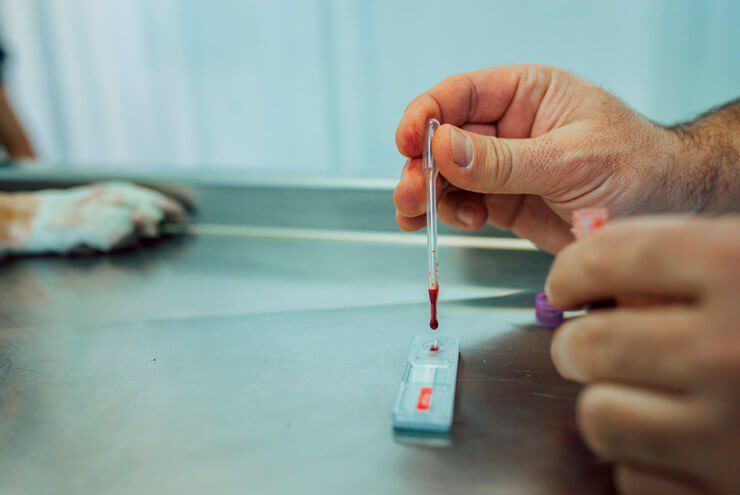
Analiz byochimik
The biochemistry of a dog’s blood will help determine or suggest diseases of individual organs, but in order to correctly decipher the results, you need to understand the essence of each indicator.
Faktè prensipal:
Albumen is a simple, water-soluble protein. It is involved in a huge number of processes, from cell nutrition to vitamin transport. Its increase has no clinical significance, while a decrease may indicate serious diseases with protein loss or a violation of its metabolism.
ALT (alanine aminotransferase) An enzyme found in most cells of the body. Its greatest amount is found in the cells of the liver, kidneys, cardiac and muscle muscles. The indicator increases with diseases of these organs (especially the liver). It also occurs after injury (due to muscle damage) and during hemolysis (destruction of red blood cells).
AST (aspartate aminotransferase) – an enzyme, like ALT, contained in the liver, muscles, myocardium, kidneys, red blood cells, and the intestinal wall. Its level almost always correlates with the level of ALT, but in myocarditis, the level of AST will be higher than the level of ALT, since AST is contained in a larger amount in the myocardium.
Alpha amylase – an enzyme produced in the pancreas (PZh), for the breakdown of carbohydrates. Amylase, as an indicator, has little clinical significance. It enters the bloodstream from the duodenum, respectively, its increase may be associated with an increase in intestinal permeability rather than with diseases of the pancreas.
Bilirubin is a pigment found in bile. Increases in diseases of the hepatobiliary system. With its increase, the mucous membranes take on a characteristic icteric (icteric) shade.
GGT (gamma-glutamyl transferase) – an enzyme found in the cells of the liver, pancreas, mammary gland, spleen, intestines, but not found in the myocardium and muscles. An increase in its level will indicate damage to the tissues in which it is contained.
Glucose – simple sugar, used as a source of energy. Changes in its amount in the blood will primarily indicate the state of metabolism. Deficiency will most often be associated with its insufficient intake (during hunger) or loss (poisoning, drugs). An increase will indicate serious diseases such as diabetes, kidney failure, etc.
Creatinine is a protein breakdown product. It is excreted by the kidneys, so if their work is disturbed, it will increase. However, it can be increased with dehydration, injuries, non-observance of hunger before a blood test.
Urea is the end product of protein breakdown. Urea is formed in the liver and excreted by the kidneys. Increases with the defeat of these organs. Decreases in liver failure.
Alkaline phosphatase – an enzyme contained in the cells of the liver, kidneys, intestines, pancreas, placenta, bones. In diseases of the gallbladder, alkaline phosphatase almost always rises. But it can also be increased during pregnancy, enteropathy, diseases of the oral cavity, during the growth period.
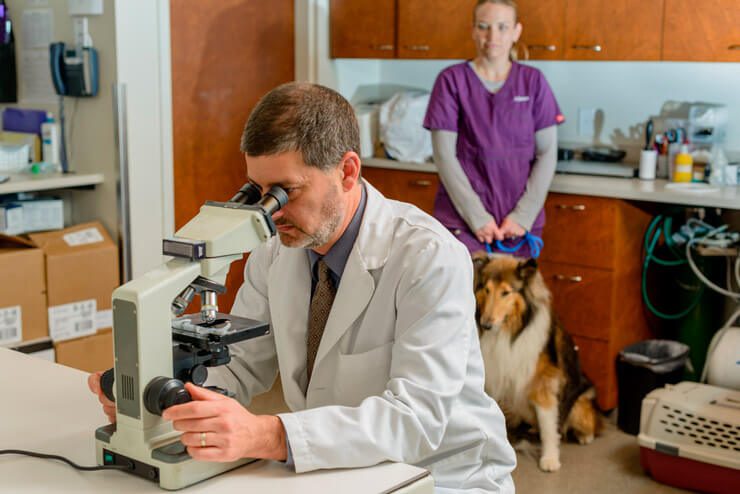
Norms of blood parameters
In general analysis
Table for deciphering the norms of indicators of a general blood test in dogs
| endèks | Adult dog, normal | Puppy, norm |
| Emoglobin (g/L) | 120-180 | 90-120 |
| Ematokrit (%) | 35-55 | 29-48 |
| Eritrosit (milyon / µl) | 5.5-8.5 | 3.6-7.4 |
| Lekosit (mil/µl) | 5.5-16 | 5.5-16 |
| Netrofil kout kouto (%) | 0-3 | 0-3 |
| Segman netwofil (%) | 60-70 | 60-70 |
| Monosit (%) | 3-10 | 3-10 |
| Lenfosit (%) | 12-30 | 12-30 |
| Plakèt (mil/µl) | 140-480 | 140-480 |

Nan analiz byochimik
Norms of indicators of a biochemical blood test in dogs
| endèks | Adult dog, normal | Puppy, norm |
| Albumin (g/L) | 25-40 | 15-40 |
| LÒ (inite/l) | 10-65 | 10-45 |
| AST (inite/l) | 10-50 | 10-23 |
| Alfa-amilaz (inite/l) | 350-2000 | 350-2000 |
| Bilirubin dirèk bilirubin total (μmol/L) | ||
| GGT (inite/l) | ||
| Glikoz (mmol/l) | 4.3-6.6 | 2.8-12 |
| ure (mmol/l) | 3-9 | 3-9 |
| Kreatinin (μmol/L) | 33-136 | 33-136 |
| Fosfataz alkalin (u/l) | 10-80 | 70-520 |
| Kalsyòm (mmol/l) | 2.25-2.7 | 2.1-3.4 |
| Fosfò (mmol/l) | 1.01-1.96 | 1.2-3.6 |
Deviations in blood counts
Analiz jeneral
Deciphering a blood test in dogs
| endèks | Pi wo pase nòmal la | Anba nòmal |
| Emoglobin Ematokrit Eritrosit | Si moun nan dezydrate Ipoksi (maladi nan poumon, kè) Timè BMC | Anemi nan maladi kwonik Kwonik maladi ren Pèt san Emoliz Iron Deficit Maladi mwèl zo Pwolonje jèn |
| leucocytes | Enfeksyon (bakteri, viral) repa resan Gwosès Pwosesis enflamatwa jeneral | Infections (eg, parvovirus enteritis) Iminosupresyon Maladi mwèl zo senyen |
| Neutrophils yo kout kouto | Enflamasyon egi Enfeksyon egi | - |
| Neutrophils yo segmenté | Enfamasyon kwonik enfeksyon kwonik | Maladi KCM yo Pèt san Gen kèk enfeksyon |
| Monosiet | Enfeksyon Timè Blesi | Maladi KCM yo pèt san Iminosupresyon |
| Lenfosit | Enfeksyon Timè (ki gen ladan lenfom) | Maladi KCM yo pèt san Iminosupresyon Enfeksyon viral |
| Plakèt | Dènye pèt san/blesi Maladi KCM yo Si moun nan dezydrate | Pèt san Sibstans emolitik (anpwazònman, kèk dwòg) Maladi KCM yo Vyolasyon pre-analytics |

Analiz byochimik
Deciphering a biochemical blood test in dogs
| endèks | Pi wo pase nòmal la | Anba nòmal |
| albumèn | Si moun nan dezydrate | Fwa pèt Enteropati oswa nefropati ki pèdi pwoteyin Enfeksyon blesi po anpil (pyoderma, atopy, ègzema) Ensifizan konsomasyon nan pwoteyin Efizyon/èdèm Pèt san |
| ALT | Atrofi fwa Defisi piridoksin | Epatopati (neoplasi, epatit, lipidoz fwa, elatriye) Ipoksi Anpwazònman pankreatit Blese |
| Ast | Atrofi fwa Defisi piridoksin | Epatopati Anpwazonnman/entoksikasyon Itilizasyon kortikoterapi Ipoksi Blesi Emoliz pankreatit |
| Alfa amilaz | - | Si moun nan dezydrate pankreatit Ren Enteropati / rupture entesten Epatopati Pran kortikoterapi |
| Bilirubin | - | Emoliz Maladi nan fwa a ak vezikulèr |
| ekstansyon GGT | - | Maladi nan fwa a ak vezikulèr |
| Glikoz | Grangou Timè sepsis Fwa pèt Gwosès an reta | Dyabèt Anksyete/laperèz Sendwòm epatokutane Ipètiwoyidis Rezistans ensilin (ak akromegali, hyperadrenocorticism, elatriye) |
| Ure | Fwa pèt Pèt pwoteyin Asit Grangou | Dezidratasyon/ipovolemi/chòk Burns Ensifizans ren ak lòt domaj nan ren Anpwazònman |
| Kreatinin | Gwosès Ipètiwoyidis Kachoksi | Dezidratasyon/ipovolemi Ren Kè echèk Gwo konsomasyon pwoteyin (manje vyann) |
| Fosfataz alkalin | - | Maladi nan fwa a ak vezikulèr Terapi ak anticonvulsant pankreatit Jenn laj Maladi dantè Maladi zo (resorption, ka zo kase) Timè |
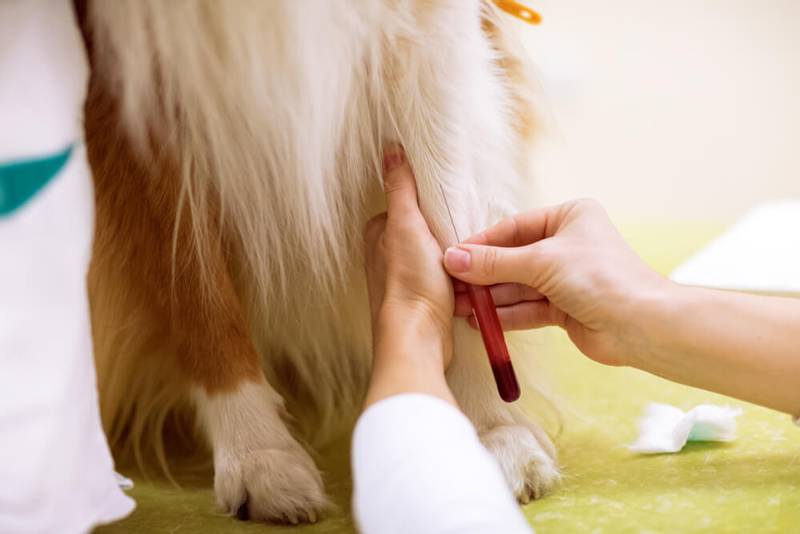
How to prepare a dog for the procedure?
The main rule before a blood test is to endure hunger.
For adult dogs weighing more than 10 kg, fasting should be 8-10 hours.
It is enough for small dogs to withstand hunger for 6-8 hours, they cannot starve for a long time.
For babies up to 4 months old, it is enough to maintain a hungry diet for 4-6 hours.
Water before analysis should not be limited.
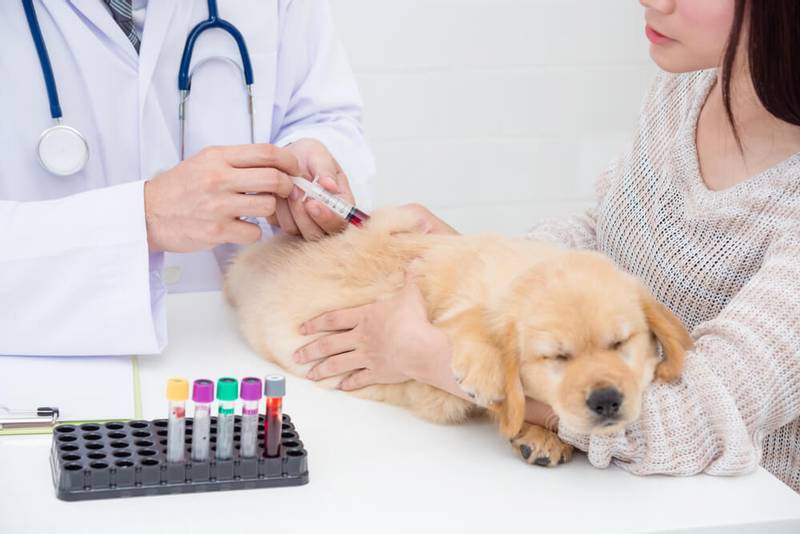
Ki jan yo tire san?
Depending on the situation, the doctor may take an analysis from the vein of the front or rear limb.
First, a tourniquet is applied. The injection site of the needle is treated with alcohol, after which the blood is collected in test tubes.
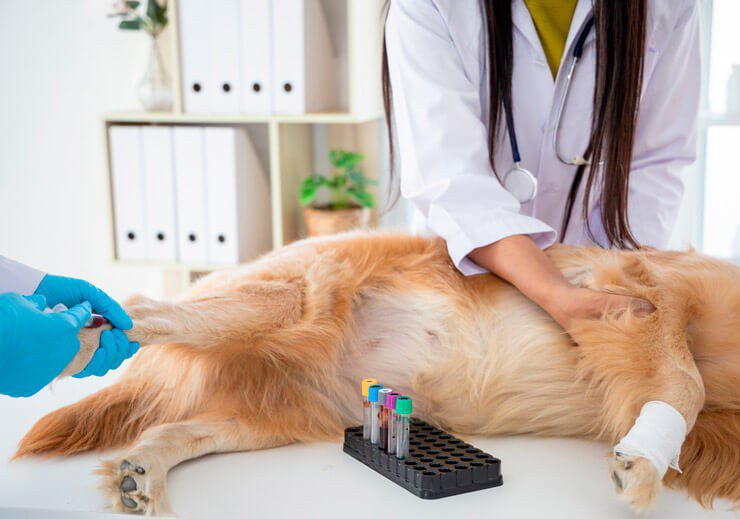
The procedure, although unpleasant, is not very painful. Animals are more likely to be afraid of a tourniquet than a puncture with a needle. The task of the owners in this situation is to calm the pet as much as possible, talk to him and not be afraid yourself, if the dog feels that you are afraid, he will be even more scared.
Repons kesyon yo poze souvan
Oktòb 6 2021
Mizajou: Oktòb NENPT, NAN






